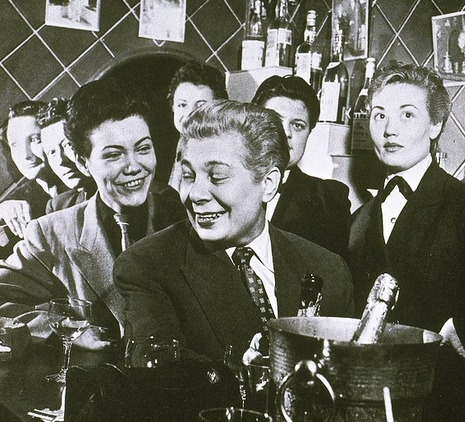
It’s hard to believe, now that RuPaul is a beloved American icon who can be identified even by nursing home residents in Middle America, that cross-dressing used to be illegal. Despite being a long-standing tradition in Western civilization, especially in theater, the simple act of walking down a public street dressed in clothing associated with the gender you were not assigned at birth could get you arrested.
Non-heteronormative women, whether butches, drag kings, or transgender men, were easy targets for harassment and violence in pre-Stonewall America. Outside of the mainstream, their subculture survived in protected enclaves for most of the 20th century: gay- and lesbian-owned taverns, cabarets, and speakeasies, private clubs, salons, the annual Greenwich Village Drag Ball. At some universities and women’s colleges occasional cross-dressing parties were surprisingly socially acceptable.
But drag kings have been relatively obscure compared to drag queens, even on LOGO. It’s fairly easy to name four or five famous drag queens, but somewhat harder to name the same number of drag kings from today or a century ago.
Midwest GenderQueer‘s JAC Stringer discussed this imbalance of attention and respect in a blog post three years ago during National Drag History Month:
Male bodied gender transgression has always been more visible, either because of guarding masculinity or simply because they are a lot taller. As a result so many female bodied performers have busted their asses with character, choreography, and costume and still never gotten to top the bill when queens are around. Now don’t get me wrong, I have some very dear friends who are queens, drag or otherwise. Some of my favorite performers are drag queens. That said, the constant removal of non-male bodied drag and gender performers from the drag movement, or even the queer movement, is fucking bullshit. Drag queens have long been a trademark representative of visual queerness, not because they are better in any way, but mainly because of the cultural dissonance caused by any male person “giving up” their masculinity for the less than desirable feminine presentation. I’m not saying drag queens haven’t been around the block, fighting the good fight. I’m just saying they weren’t the only ones there. Another element that I feel may contribute to the muffling of drag kings is the stereotyping of female-bodied queerness. it isn’t just straight porn projecting “straight looking” women fucking each other anymore. Shows like the L Word promote a gender-normative, hyper-sexualized female queerness that leaves no room for anything or anyone else. Who decided that genderfucked female bodies weren’t sexy? Homonormative, HRC pumping queer gentrification rears its ugly head again.
I asked JAC if it was likely that there will be a drag king equivalent of RuPaul any time soon. JAC replied:
At the moment, I don’t think it is likely. Heteronormative culture is fascinated with drag queens for one major reason—sexism and the obsession with masculinity. Masculinity and maleness are prized above all else in terms of power and privilege, so someone giving up masculinity is seen as comical, mysterious, confusing, and even fascinatingly disturbing. People feel the same way about kings, but less so as aspiring to masculinity is seen as reasonable and expected, since masculinity holds more power. Ironically, to those of us in the drag community, we think of it so differently; it is empowering and fun, challenging and political. Also, there is the irritating argument that queens take more work to get dressed, and are prettier’ and ‘sparklier’ than kings, and therefore deserve more attention. Anyone who says that obviously has never seen kings prepare for a show, or burst out on stage covered in sequins and bust out a complexly choreographed dance routine. And, we can’t forget that some of us are not kings or queens, but are in the middle of the genderbending spectrum, or there are also femmes and boy dancers (women who perform femininity, and men who perform masculinity). Being a genderbending performance artist myself, I am just as glittery and shiny as any queen, but why don’t I get the same attention? I don’t have penis and therefore it is supposed I can’t really be bucking the system that much. When I am outside my home community, say at a school or with an unfamiliar audience, I have actually noticed a difference in how the audience responds based on if they misread me as a queen, versus the next number when I am seen as a king or genderbender. So, if a drag audience is more preoccupied with queens, then I would assume the same for a TV audience. All in all, drag performers, no matter what kind, can be unfairly exotified or revered by outsiders no matter who or what we are. The levels are dependent on their own cultural views. But the real drag world is simply not what RuPaul’s show paints it to be and I don’t know if the media will ever care enough to show the world what we are really made of.
Here is a compendium of images of masculine drag from the past century. Whether these photos are from a one-off party, images of female cabaret or music hall entertainers in drag king costume, or a trans man’s daily wear is not always possible to pinpoint. But whatever their personal situation, they were living their lives exactly how they wanted and proud to be photographed doing so.

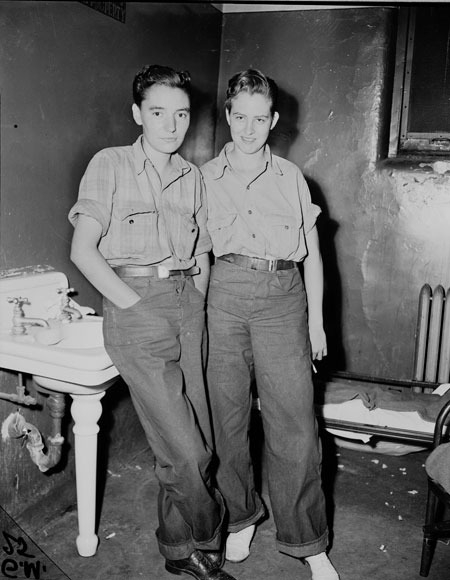
Above, Evelyn “Jackie” Bross, left, was 19 years-old and walking home from her job as a machinist at a defense plant when she was arrested for public indecency and cross-dressing in Chicago in 1943.
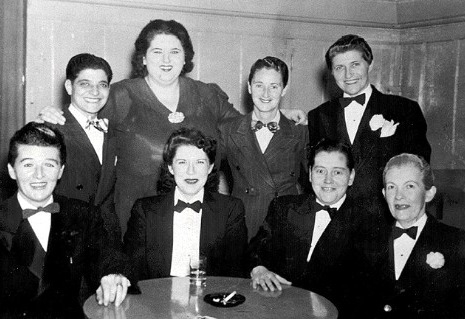
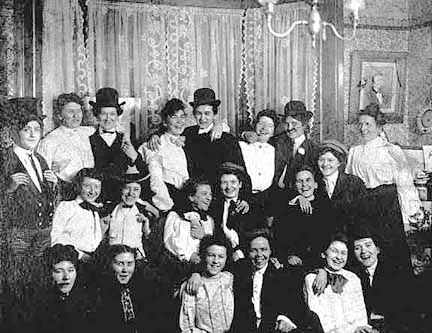

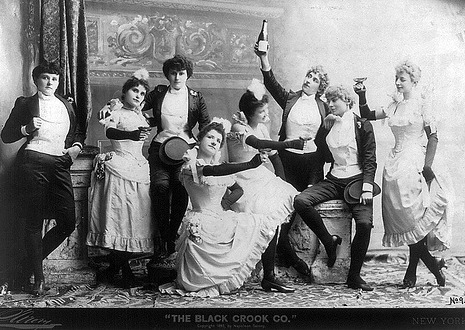

Music hall performer and drag king Ella Shields, 1933:
Murray 101: The life and times of Mr. Showbiz, 2009:





